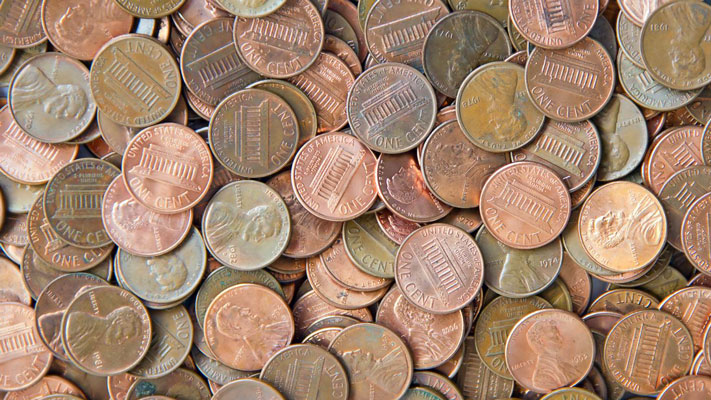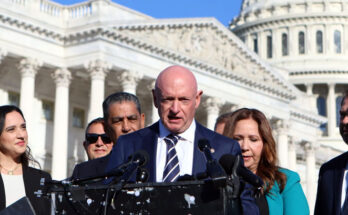Contributed Article
PHILADELPHIA — In a quiet ceremony echoing through the historic halls of the U.S. Mint, America turned the page on one of its most enduring symbols Wednesday, halting production of the humble penny after more than two centuries of clinking through pockets and cash registers.
The 1-cent coin, first struck in 1793 and immortalized with Abraham Lincoln’s profile since 1909, has long been woven into the fabric of American life—from “a penny for your thoughts” to the childhood ritual of flipping coppers for luck. But inflation and economics finally caught up, rendering the penny a costly relic. Each one now costs nearly 4 cents to produce, a penny’s worth of irony that tipped the scales toward obsolescence.
“Billions of pennies are still out there, jingling in jars and forgotten in couch cushions, and they’ll remain legal tender,” said Treasury spokesperson Elena Vasquez. “But no more will roll off the presses. It’s the end of an era, but one that’s been coming for a long time.”
The decision, announced earlier this year amid bipartisan support in Congress, marks the first full discontinuation of a U.S. circulating coin since the half-cent faded into history in 1857. Historians like numismatist Dr. Clara Beach noted the penny’s humble origins: “Back in 1793, it could snag you a biscuit, a candle, or a sweet treat from a street vendor. Today? It’s lucky if it buys you a second’s worth of time at the checkout line.”
Production had already tapered off over the summer, with the Philadelphia and Denver Mints shifting gears to higher-demand denominations. The final run unfolded like a poignant factory farewell. Workers in crisp uniforms gathered on the bustling floor, the hum of machinery giving way to a hushed reverence. As the last batch of gleaming coppers tumbled into trays—stamped with the familiar wheat stalks and shield reverses—the room erupted in applause. High-fives and hugs followed, with one veteran press operator wiping away a tear. “It’s like losing a quirky old uncle,” he quipped. “Annoying at family gatherings, but you kinda miss him.”
The ripple effects are already being felt at street level. Retailers nationwide are adapting with a mix of pragmatism and panache. Some chains, like QuickMart convenience stores, have rolled out voluntary rounding.
Others are getting inventive to offload their stockpiles. A Brooklyn coffee shop is offering a free espresso shot for every 50 pennies redeemed, while a Denver bookstore runs a “Penny Jar Lottery” for donated hauls. But not everyone’s cheering. “We’ve been pushing to ditch the penny for 30 years—think of the savings, the faster transactions,” said Jeff Lenard, vice president of government relations for the National Association of Convenience Stores. “But this abrupt end? It’s chaos. We wanted a phased rollout, not a cliff dive.”
Advocates for elimination point to clear wins: The U.S. Mint projects annual savings of up to $60 million, enough to fund other numismatic priorities. Checkout speeds could improve by seconds per transaction, adding up to hours saved daily across the economy. And the U.S. isn’t alone—Canada axed its penny in 2012, rounding cash purchases to the nearest 5 cents with minimal fuss. Australia, New Zealand, and several European nations have followed suit, citing environmental benefits as well: fewer coins mean less zinc, copper, and energy use in production.
Yet the penny’s demise exposes quirks in the broader coin ecosystem. While pennies hogged the mint’s output—accounting for roughly half of all coins struck in Philadelphia and Denver over the past century—the nickel, that five-cent workhorse, costs a whopping 14 cents to make. Dimes, by contrast, clock in under 6 cents, and quarters nearly 15 cents. “It’s like we’re subsidizing nostalgia at the expense of efficiency,” quipped economist Dr. Liam Hargrove of the Federal Reserve Bank of Philadelphia.
Banks, caught in the crossfire, have started rationing penny rolls—a bizarre twist on what was meant to cure a supposed surplus.
As the nation adjusts, cultural tributes are pouring in. Social media is awash with #PennyGoodbyes: memes of Lincoln tipping his hat, viral videos of kids stacking towers of coppers, and think pieces pondering if “E pluribus unum” now means “out of many, one rounded price.” Museums from the Smithsonian to the Philadelphia Mint are snapping up final-run specimens for display, preserving the coin that powered penny arcades, payphones, and parking meters.
For now, that jar on your dresser holds history—legal, if unloved. But as Vasquez put it, “The penny taught us the value of small things. In letting it go, we’re making room for what’s next.” Whether that’s a nickel renaissance or a cashless future remains to be seen. One thing’s certain: No more lucky pennies under the couch.










